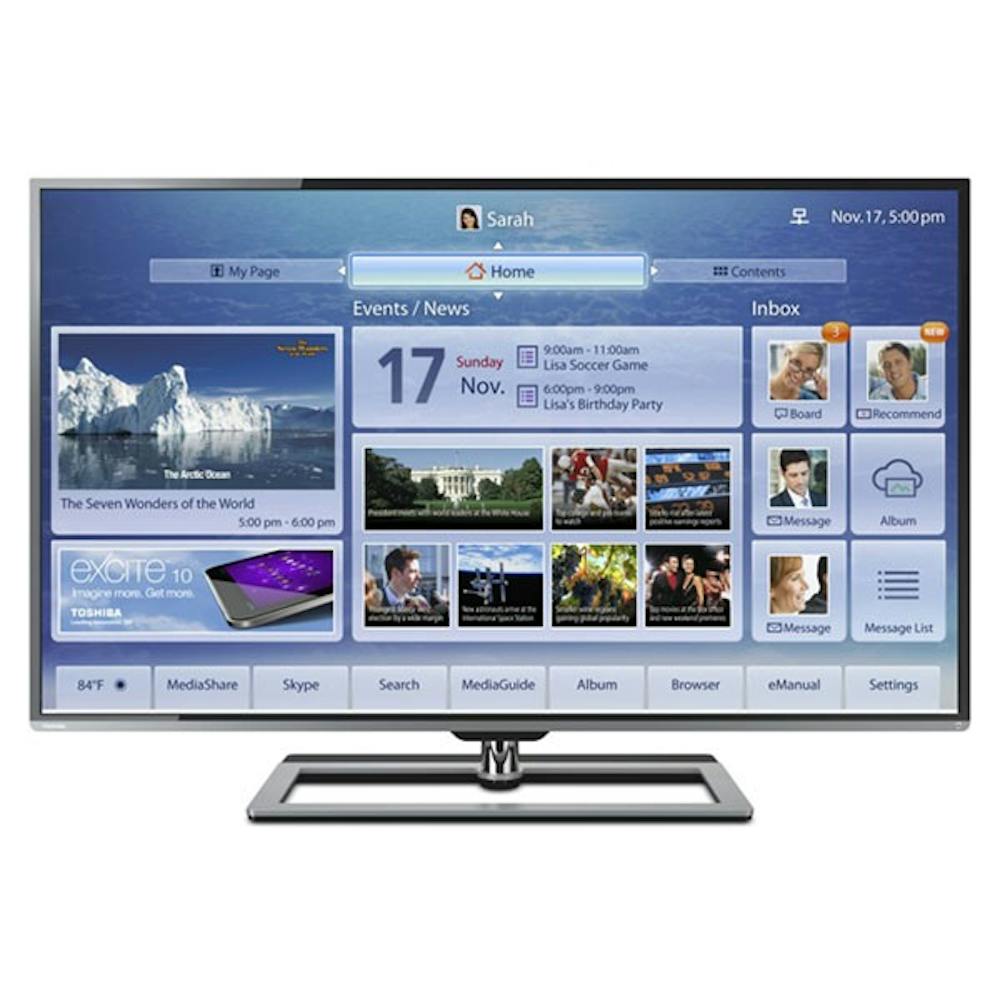Jeremy Ervin is a sophomore journalism major and writes ‘No Sleep Till Muncie’ for The Daily News. His views do not necessarily reflect those of the newspaper. Write to Jeremy at jrervin@bsu.edu.
Technology roundup
Last year was a big year for technology and tech enthusiasts, but every year since year one has been a big year for tech. Moore’s law keeps bringing the ruckus and providing us with cool stuff, so I want to take a look at two favorite developments from 2013.
Console Wars
It’s been about seven years since Sony and Microsoft last clashed. Both the Xbox One and the PS4 launched in November, so the dust has yet to settle in this generation of console wars.
Both systems boast similar specs — each has 8GB of RAM with 500GB hard drives, but the PS4 costs about $100 less, according to ign.com.
Microsoft encountered resistance from fans in the beginning for some of its policies surrounding its devices. Originally, the Xbox One Kinect 2 camera would always be on, leading to privacy concerns. When announced, the console also required regular connection to the Internet, using game fees on top of its more expensive price tag.
Fan outcry led to the reversal of these policies, casting an embarrassing shadow over the system’s announcement and providing Sony with plenty of marketing ammunition. However, the Xbox One still requires mandatory game installs, and neither system will be compatible with their older counterparts.
If you judge victory purely from units sold, the “winner” of last generation is neither of those consoles.
According to vgchartz.com, the Wii sold nearly 100 million consoles globally, beating both the Xbox 360 and PS3 by about 30 million. The Wii U so far has shipped more than 5 million consoles since its launch in November 2012, beating out both the Xbox One and PS3 despite lacking their specs and features.
Nintendo had a year head start on its competition and its lead is closing fast. While we can talk all we want about specifications, features and sales figures, the only thing that really matters is personal preference. With developers finally able to make games on much more powerful platforms, if anyone “wins” the console war, it will be gamers.
The Rise of Netflix Originals
On Feb. 1, Netflix released a full season of its original show “House of Cards.” Only available on Netflix, the exclusive title won 3 Primetime Emmy Awards and a Webby Special Achievement Award with more nominations pending.
Netflix followed up its success by releasing two more original series, “Hemlock Grove” and “Orange is the New Black,” which also received warm receptions.
All three shows are slated for second seasons this year.
The video provider also has seen success with the original launches of stand-up comedy specials, most recently with “Parks and Recreation” star Aziz Ansari’s new routine “Aziz Ansari: Buried Alive.” Canceled show “Arrested Development” also had a comeback season, only featured on Netflix.
Netflix’s success as a producer as well as a distributor of content reflects on a new generation’s perception of media and technology. These new programs are commercial free and there are no special fees to watch these beyond the Netflix subscription.
Unlike contemporary television shows, they were released a full season at a time, allowing viewers to watch episodes at their own pace. Combined that with the ongoing rollout of Google Fibers, which Google claims on fiber.google.com, is up to 100x faster that average broadband speeds. You’ve got a formidable new content delivery system. I admit I’m enjoying watching the telecommunications giants squirm.
The one-two punch of online versatility and better internet infrastructure paints a beautiful picture of the future of media and media delivery for years to come.
Looking Ahead
With the Consumer Electronics Show in full swing on the Las Vegas strip, the pace and development of technology presses on. The year 2013 gave us new video game consoles, iPhone software and a Google Glass limited release. A new year is here, and soon, there will be many cool gadgets to mess with. Here is some 2014 technology to look forward to.
LG G Flex
Modern smartphones may be thin, but they didn’t bend until the LG G Flex showed up. The company’s website, lg.com, promotes the Android-running device as “the world’s first curved, flexible smartphone.”
While pricing is still unknown, The Washington Post reported Monday that the phone will be available on AT&T, Sprint and T-Mobile. It is expected to be commercially available in early to mid-2014.
Developers maintain that the curved shape is not just a gimmick. The slight bend in its 6-inch screen is intended to improve sound quality when talking on the phone, better visual quality by reducing glare and more comfort when stored in pockets.
Both stress testing professionals and amateurs have taken the flexibility claims as a challenge, and their experiments are well-documented on the Internet.
New Lines of 4k TVs
The reign of 1080p as the default high quality video format may come to a close. Resolution at 4,000p — also known as “Ultra HD” — has been in development for a some time, and CNET, The Verge and Engadget reported that brands like Sony, Vizio and Toshiba are launching lines that use the format in 2014.
It also should be noted that 4,000p is a blanket term that covers a range of resolutions that fit within a certain framework. In 2012, CNET cited the Consumer Electronics Association in defining the format as “at least 3,840×2, 160 pixels.”
While the new resolution is making its way to consumers, it may be out of reach for many. Pricing has not yet been released for many of the upcoming sets, but Sony’s smallest compatible screen comes in at 49 inches while the largest at 85 inches.
Family 3-D Printers
Company 3D Systems announced its new Cube 3 printer and plans to sell it for less than $1,000 this year, reported tech news publication Gizmag.
In 2012, 3-D printers made headlines with the distribution of printable gun schematics by group Defense Distributed. The evolving technology has seen technical improvement in recent years, and 3D Systems is marketing the Cube 3 toward families, according to its website.
The Cube 3 has a maximum print size of 6-by-6 inches and uses different materials and colors on the same print job. The device also pairs with a mobile app that allows users to send schematics and begin printing wherever they are.
Preloaded ABS and PLA plastic cartridges can be purchased from 3D Systems and other retailers.
In line with its family marketing plan, 3D Systems promotes the Cube 3 as safe for ages 8 and older. The Cube 3 offers higher resolution than its predecessors, with printing precision coming in at 75 microns. The company’s website claims that the printer is twice as fast as other commercially available 3-D printers. The Cube 3 also is compatible with both Macs and PCs.
‘The Elder Scrolls’ online
Ten years after beginning the series of single-player role-playing games, Bethesda is taking its most popular series in a new direction. After the commercial success of the titles “The Elder Scrolls IV: Oblivion” and “The Elder Scrolls V: Skyrim,” the company is launching its first massive multiplayer online role playing game, also known as an MMORPG.
“World of Warcraft” has seen a substantial fall in subscribers since its peak in 2010 from 12 million to just 7.6 million in summer of last year, according to statements made by gaming news sites VentureBeat and G4tv. Whether this is the result of a loss of public interest in MMORPGs or a symptom of game developer Blizzard’s choices is unclear. “The Elder Scrolls” online seeks to fill that void.
The game’s official website elderscrollsonline.com states that after the first 30 days, players must pay a subscription fee of $14.99 per month to play the title, which is the same originally charged by “World of Warcraft.”
Bethesda has set the game for release in March for both Mac and PC. Beta testing sign up is now open at elderscrollsonline.com.





